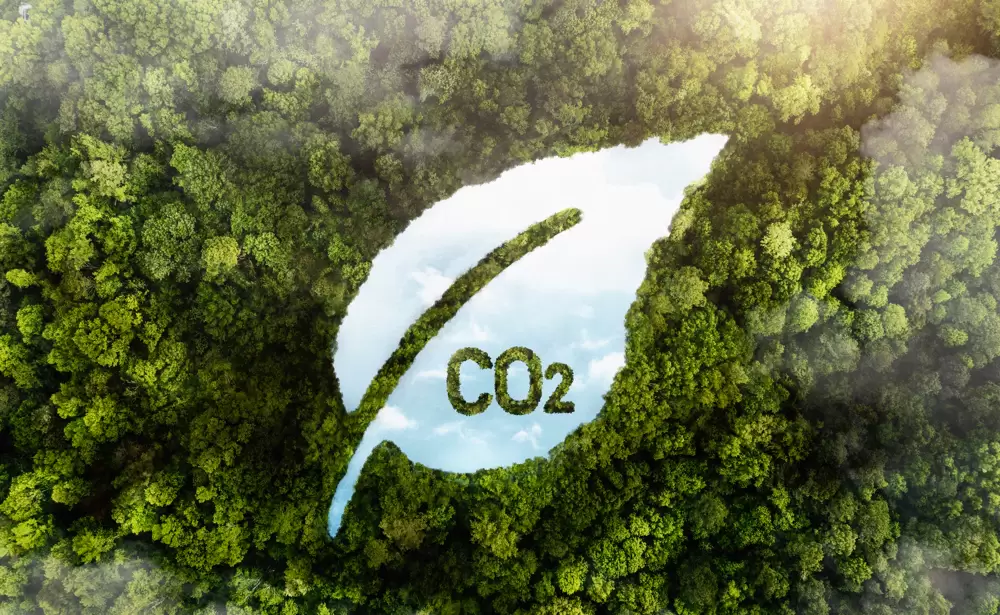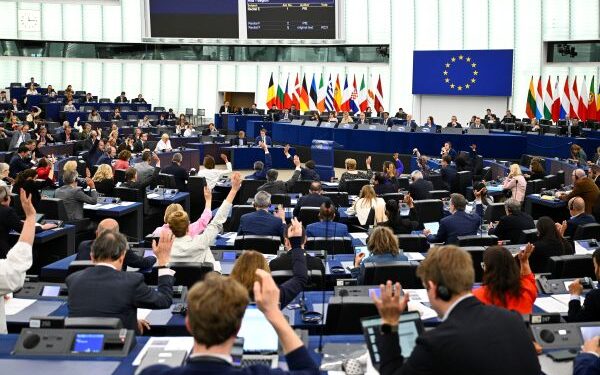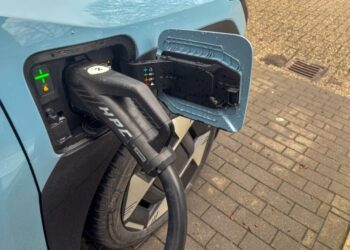The automotive industry in Europe is experiencing a significant shift as the European Parliament accelerates the process of regulating carbon emissions. With growing concerns over climate change and environmental sustainability, legislative bodies across the continent are pushing for stricter rules aimed at reducing emissions and mitigating the impacts of pollution. These new regulations aim not only to improve air quality but also to encourage a transition to cleaner, more sustainable transportation options.
In this article, we will explore the rapid changes in the emission regulations in the European Union, how these regulations are being fast-tracked by the European Parliament, and the potential effects on both the automotive industry and consumers. Additionally, we will discuss the broader environmental impact of these regulations and the future of transportation in Europe as it shifts towards sustainability.
A. The Growing Importance of Emission Regulations
Climate change has become one of the most urgent issues of the 21st century. As a result, governments, organizations, and citizens alike are placing increased emphasis on environmental protection and reducing carbon footprints. For the European Union, one of the primary sources of carbon emissions comes from the transportation sector, particularly from cars, trucks, and other vehicles that rely on internal combustion engines.

A.1. The Role of the Automotive Sector in Carbon Emissions
The European automotive sector plays a critical role in the continent’s carbon footprint. Passenger vehicles alone contribute to a significant portion of carbon emissions, making the automotive industry a focal point for emission-reduction efforts.
-
Transportation Emissions: In 2020, transportation accounted for approximately 30% of total greenhouse gas emissions in the European Union. The majority of these emissions come from road transport, particularly vehicles powered by gasoline and diesel engines.
-
Regulatory Response: In response to the environmental crisis, the European Parliament has been working to implement new laws and regulations that target a reduction in emissions. These regulations focus on lowering carbon dioxide (CO2) emissions from passenger vehicles, with stricter targets set for the coming years.
B. Fast-Tracking Emission Regulation Changes
In a bid to meet the European Union’s climate goals, the European Parliament has expedited the legislative process surrounding emission reduction measures. The aim is to ensure that the automotive industry transitions swiftly from traditional internal combustion engines to electric and alternative fuel-powered vehicles.
B.1. The Shift Toward Green Vehicles
At the core of the EU’s emission regulation changes is the drive to promote electric vehicles (EVs) and reduce reliance on fossil fuels. The European Union is striving to make electric cars more affordable, accessible, and widespread. To achieve this, regulations are being adjusted to provide incentives for manufacturers to produce more environmentally friendly vehicles.
-
Zero-Emission Vehicles (ZEVs): The European Parliament has set ambitious targets for zero-emission vehicles, aiming to have 30 million electric cars on the road by 2030.
-
Incentives for EV Manufacturers: In addition to regulatory targets, the EU is offering various incentives for automakers to switch to greener technologies. These include financial incentives, tax credits, and grants for manufacturers investing in electric vehicle production and charging infrastructure.
B.2. Tougher Emission Standards
One of the most significant changes in the new emission regulations is the tightening of CO2 emissions standards for new vehicles. These revised standards are being fast-tracked to ensure that automakers meet the EU’s climate goals and work towards net-zero emissions.
-
Stricter CO2 Limits: The new regulations impose stricter limits on the amount of carbon dioxide that vehicles can emit. This includes not only passenger cars but also light commercial vehicles. Automakers will be required to comply with these limits to continue selling their vehicles in the European market.
-
Fines for Non-Compliance: Companies that fail to meet the new emission targets will face hefty fines. This provides a significant financial incentive for automakers to comply with the new standards and accelerate the transition to electric vehicles.
B.3. The Role of the European Green Deal
The European Green Deal plays a central role in the fast-tracking of emission regulations. This ambitious package of policies aims to make Europe the first climate-neutral continent by 2050. It includes a wide range of measures, from clean energy initiatives to emission reduction targets, with a focus on promoting green technologies and reducing pollution.
-
Carbon Border Adjustment Mechanism (CBAM): A key part of the Green Deal, the CBAM will impose tariffs on imported goods from countries with weaker climate policies. This will create a level playing field for European manufacturers who are already subject to stringent emission regulations.
-
Sustainable Transport: The Green Deal sets out a comprehensive plan for transforming Europe’s transport sector. It includes promoting the use of clean energy in transportation and investing in the infrastructure needed to support electric vehicles.
C. Impact on the Automotive Industry
The new, fast-tracked emission regulations will undoubtedly have a profound impact on the automotive industry. Automakers will need to adjust their manufacturing processes, product offerings, and business strategies to comply with the stricter emission standards.
C.1. Transition to Electric Vehicles
The most significant impact of the new regulations is the accelerated transition to electric vehicles. Automakers are being pushed to rapidly expand their electric vehicle portfolios and scale up production. Many major automotive companies have already announced plans to invest heavily in electric vehicle development and production to meet the regulatory requirements.
-
New EV Models: Companies are introducing new electric vehicle models across various price points and vehicle categories, ranging from affordable city cars to high-performance electric sports cars.
-
Investment in Battery Technology: Automakers are also investing in the development of more efficient and cost-effective battery technologies to improve the range and performance of electric vehicles. This is critical in making EVs a viable option for a broader range of consumers.
C.2. Changes in Consumer Preferences
As emission regulations become more stringent, consumers are expected to shift towards electric vehicles and hybrid options. Government incentives, such as tax breaks, rebates, and subsidies, will play a key role in encouraging consumers to adopt greener vehicles.
-
Increased EV Adoption: With the promise of lower operating costs, fewer emissions, and government incentives, more consumers are expected to choose electric vehicles in the coming years. This will help accelerate the shift toward cleaner transportation and contribute to the EU’s emission reduction goals.
-
Second-Hand EV Market: As more consumers purchase electric vehicles, the second-hand EV market is also expected to grow. This will help make EVs more accessible to a wider range of consumers, including those who may not be able to afford new models.
C.3. The Economic Impact on Automakers
While the new emission regulations are designed to reduce environmental harm, they will also place pressure on automakers to invest in cleaner technologies. The costs of transitioning to electric vehicles and complying with stricter emission standards could be substantial, particularly for smaller manufacturers.
-
Financial Challenges for Automakers: Companies that have heavily relied on traditional combustion engine vehicles may face challenges as they transition to electric vehicle production. This could result in increased costs for research and development, supply chain adjustments, and retooling of manufacturing plants.
-
Collaborations and Partnerships: To manage these costs, many automakers are forming partnerships with other companies, including technology firms and battery manufacturers, to pool resources and expertise in the development of electric vehicles.
D. The Environmental Impact of Stricter Emission Regulations
The ultimate goal of the European Parliament’s fast-tracked emission regulation changes is to reduce pollution and improve air quality across Europe. These measures are expected to have far-reaching environmental benefits, including reductions in carbon emissions, improved public health, and the acceleration of the transition to a circular economy.

D.1. Reductions in CO2 Emissions
The new emission regulations are expected to lead to significant reductions in carbon dioxide emissions from the transportation sector. With stricter limits on CO2 emissions and the promotion of zero-emission vehicles, the EU will make substantial progress toward its climate goals.
-
Lower Carbon Footprint: Electric vehicles, which produce no tailpipe emissions, will play a crucial role in reducing the carbon footprint of the transportation sector. The shift from internal combustion engines to electric drivetrains will help decrease overall emissions from the industry.
-
Cleaner Air: Reducing CO2 emissions will also contribute to better air quality in European cities, leading to improved public health outcomes and a reduction in respiratory illnesses caused by pollution.
D.2. A Move Toward Sustainability
By fast-tracking emission regulations, the European Parliament is promoting a sustainable future for transportation. The transition to electric vehicles and alternative fuel options will help reduce dependence on fossil fuels and lower the environmental impact of the automotive industry.
-
Circular Economy: The shift towards electric vehicles is also aligned with the principles of a circular economy, where resources are used more efficiently, products are designed for longer life cycles, and waste is minimized. Automakers are working on recycling battery materials and developing more sustainable vehicle production methods.
-
Green Energy Integration: As the demand for electric vehicles grows, there will also be increased pressure to integrate renewable energy sources into the charging infrastructure. Solar, wind, and other green energy sources will play a key role in ensuring that the electric vehicle fleet is truly sustainable.
E. The Future of Emission Regulations
As the EU moves forward with its aggressive emission regulation changes, the future of transportation in Europe looks increasingly green. The combination of stricter emission limits, incentives for electric vehicle adoption, and investments in renewable energy will create a more sustainable and environmentally friendly transportation system.
E.1. Technological Innovation
The fast-tracking of emission regulation changes will spur further innovation in the automotive industry. New technologies, such as hydrogen fuel cells, advanced battery systems, and autonomous driving, will continue to emerge, further transforming the way we think about transportation.
E.2. Global Influence
The EU’s decision to fast-track emission regulations may influence other regions to follow suit. As the world’s second-largest car market, Europe’s policies could prompt similar measures in other parts of the world, contributing to a global push toward cleaner and greener transportation.













